Exploring the Neuron Morton: An In-Depth Analysis
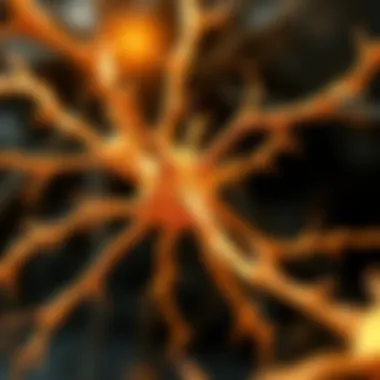
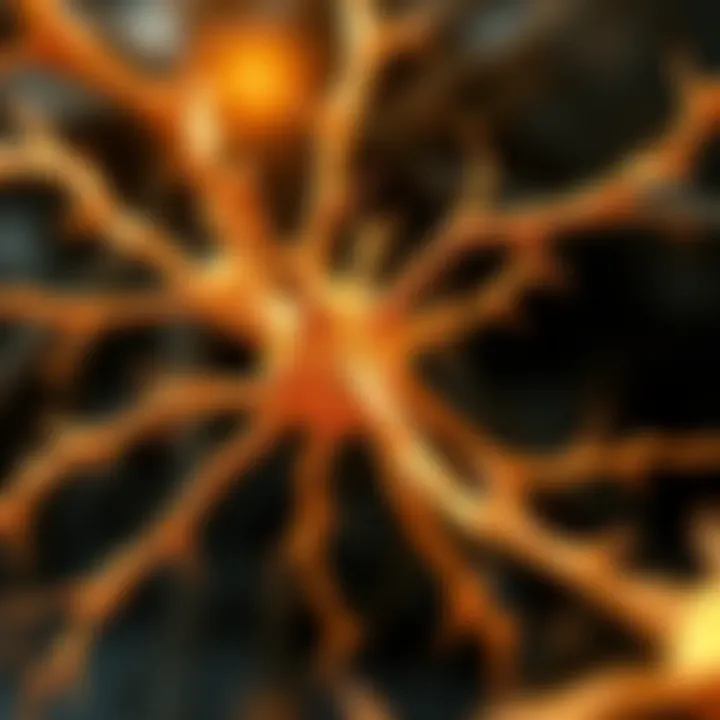
Intro
The neuron morton stands at the crossroads of intricate research and practical application within the realms of neuroscience and psychology. This subject isn't just an academic curiosity; it serves as a touchstone for understanding the very fabric of our nervous system. As we unravel the layered complexity of neuron morton, we shall expose its structural intricacies, functional attributes, and the profound implications these have on neurological disorders.
In an era where studying the brain has become paramount, exploring the neuron morton reveals essential insights that bridge various disciplines. This analysis aims to equip scholars, students, and professionals alike with a comprehensive perspective on the neuron morton, while also shedding light on the transformative potential of ongoing research.
Key Concepts and Terminology
Definition of Key Terms
Understanding the key terms associated with neuron morton is vital to grasping its significance. Some crucial definitions include:
- Neuron Morton: This term refers to specialized neurons that play a crucial role in processing and transmitting information across the nerve pathways in the brain and spinal cord.
- Neuroplasticity: The brain's ability to reorganize itself by forming new neural connections throughout life.
- Neurological Disorders: Conditions that affect the brain, spine, and the nerves that connect them, leading to various dysfunctions.
Concepts Explored in the Article
Throughout the article, we will explore several key concepts:
- Structural Characteristics: Examining the physical makeup of neuron morton, including dendrites, axons, and cell bodies.
- Functional Roles: Understanding how neuron morton operates within neural circuits to facilitate communication between different brain regions.
- Clinical Implications: Evaluating how disrupted function of neuron morton is implicated in disorders such as schizophrenia, Alzheimer’s disease, and multiple sclerosis.
Findings and Discussion
Main Findings
Our exploration has yielded several critical findings:
- The structural attributes of neuron morton showcase a high degree of specialization, essential for efficient neural communication.
- Disruptions in neuron morton functionality can catalyze various neurological disorders, underscoring the importance of this neuron in clinical settings.
- Emerging research suggests neuron morton may be a key player in neuroplasticity, highlighting its potential in therapeutic contexts.
Potential Areas for Future Research
Looking ahead, potential research avenues include:
- Investigating the molecular pathways influencing neuron morton development and function.
- Exploring the therapeutic implications of enhancing neuron morton capabilities in treating various neurological conditions.
- Conducting longitudinal studies on neuroplasticity to better understand the adaptive changes of neuron morton throughout different life stages.
The pursuit of knowledge about neuron morton not only enhances our understanding of the nervous system but also opens doors to innovative treatment strategies for neurological disorders.
Prolusion to Neuron Morton
The study of neuron morton has gradually emerged as a cornerstone in understanding both the structural and functional complexities of the nervous system. This section serves not only as an introduction but as a portal into the depths of neurobiology. The neuron morton, an intricate piece of biological architecture, epitomizes how neuronal elements collaborate to form the foundation of neural networks. Examining neuron morton provides insights into the larger picture of brain activity, urging scholars and practitioners alike to delve deeper into the functions and implications of these critical components.
Defining Neurons
To grasp the essence of neuron morton, one must first understand the basic unit: the neuron. Think of neurons as the workhorses of the nervous system, tasked with transmitting information through electrical and chemical signals. The anatomy of a neuron typically consists of three main parts: the cell body (soma), dendrites, and the axon. Each part plays a significant role in the neuron's function. Dendrites act like antennas, receiving signals from other neurons, while the axon, often insulated by a myelin sheath, sends action potentials to communicate with other cells.
Neurons are diverse. Some are sensory, others are motor, and many are interneurons that roam between the two. This diversity ensures that the nervous system can perform a multitude of functions, from reflex actions to complex cognitive processing.
Intro to Neuron Morton
Neuron morton specifically refers to a subtype of neurons found primarily within intricate microenvironments of the brain. These neurons are characterized by their unique connectivity patterns and the specialized functionalities they offer. Understanding neuron morton sheds light on pivotal processes such as synaptic transmission and neuroplasticity, allowing for a deeper appreciation of how learning and memory occur at the cellular level.
Neuron morton provides a vital link in the chain of neural communication, affecting both cognitive and emotional processes in the human experience.
The significance of neuron morton, however, transcends mere anatomical distinction. It instigates a broader discourse regarding its contributions to neurological health and disorders. By mapping the pathways of neuron morton, researchers can better understand emerging mental health issues, potentially leading to groundbreaking therapeutic strategies. Recognizing the salience of neuron morton exemplifies the intersection of molecular neurobiology and behavioral psychology, demonstrating how these seemingly disparate domains can coalesce to inform therapeutic practices.
The importance of exploring this kernel of knowledge is paramount, not only for students of neuroscience but also for educators and healthcare professionals who seek to enrich their understanding of neural functions. Through a comprehensive analysis of neuron morton, this article endeavors to elucidate complex physiological phenomena and their relevance in health and disease.
Anatomy of Neuron Morton


Understanding the anatomy of Neuron Morton is crucial as it lays the foundation for appreciating its roles and functions within the nervous system. An in-depth examination unveils not just the physical characteristics but also the intricate interplay between its various elements, which significantly determine how this neuron operates and communicates. Given its implications in various neurological contexts, knowing the anatomy helps researchers and practitioners alike to build comprehensive treatment strategies or further studies.
Cellular Structure
At the core of the Neuron Morton is its cellular structure, which demonstrates a remarkable design that facilitates its myriad functions. Each neuron comprises a cell body, dendrites, and an axon, but the Neuron Morton showcases specific adaptations that set it apart from typical neurons. The soma, or cell body, houses essential organelles and is often larger than average, indicating a high metabolic demand.
The dendrites, those branch-like projections, exhibit unique shapes that resemble leaves on a tree. This expansive structure is critical, as it increases the surface area for receiving signals, allowing the neuron to integrate a wealth of information from various sources. Dendritic spines, tiny protrusions on dendrites, serve as the sites for synapses and can even change in response to learning or experience, emphasizing their role in adaptive processes.
One cannot overlook the axon, a long, thin extension that transmits impulses away from the cell body. Characteristically, the axon of Neuron Morton may be myelinated, which enhances the speed and efficiency of signal conduction. Interestingly, the myelin sheath is composed of specialized glial cells unique to the Neuron Morton, providing not just insulation but also a supportive environment for rapid communication through nervous pathways.
In summary, the cellular structure of Neuron Morton is a blend of specialized form and function, amplifying its capacity to process and relay information effectively.
Synaptic Functionality
Moving on to synaptic functionality, this aspect is equally vital to grasping the significance of Neuron Morton. Synapses are the junctions where neurons communicate, and their functioning determines the flow of information, shaping both cognition and behavior.
The synaptic cleft, the narrow gap between two neurons, is a site of intense biochemical activity. When an action potential reaches the axon terminals of Neuron Morton, neurotransmitters are released into the synaptic cleft. The innovative aspect of Neuron Morton lies in the diversity of neurotransmitters it can deploy. This neuron can manage both excitatory and inhibitory signals, allowing for nuanced control over neural circuits.
Once released, these neurotransmitters bind to specific receptors on the postsynaptic neuron, sparking responses that can either facilitate or inhibit the continuation of the signal. What sets Neuron Morton apart is its ability to modulate synaptic strength through mechanisms like long-term potentiation and long-term depression, which are fundamental for learning and memory.
Moreover, synaptic plasticity, the capacity of synapses to strengthen or weaken over time, is particularly pronounced in Neuron Morton. This adaptability highlights the critical involvement of this neuron in higher cognitive functions and emotional regulation. As connections strengthen with use, the neuron effectively embodies the notion that “neurons that fire together, wire together.”
In encapsulation, synaptic functionality is where the magic of communication happens in Neuron Morton. Understanding it is pivotal for unraveling the complexities of neural networking and the resultant impact on both healthy and impaired neurological functions.
Physiological Role of Neuron Morton
The neuron morton plays a pivotal role in the intricate dance of physiological processes within the nervous system. For students, researchers, and educators alike, understanding this role is fundamental to grasping how neural communication and cognitive functions emerge. The significance of the neuron morton stretches from its participation in synaptic transmissions to influencing broader neural networks. By examining these aspects, we see how critical it is for maintaining healthy brain function and overall mental health.
Impact on Neural Communication
At its core, the neuron morton contributes to how signals are relayed throughout the brain and body. Essentially, these neurons are known for establishing connections within the nervous system, facilitating communication that is both rapid and efficient.
- Neurons utilize specialized structures called synapses, where neurotransmitters are released.
- These chemical messengers bridge the gap between neurons, allowing for the transfer of information.
- By responding to electrical impulses, the neuron morton ensures that messages are transmitted fluidly, preventing bottlenecks in communication.
One can think of neuron morton as a bustling messenger service, adept at delivering essential information to specific locations without delay. This swift relay is vital in conditions such as reflex actions where rapidity can be a life-saver. It's clear that any disruption in this communication can lead to significant consequences. For instance, in conditions like multiple sclerosis, the efficiency of signal transmission is impaired, leading to a cascade of neurological symptoms that can be debilitating.
"There is a certain elegance in how neurons communicate, with the neuron morton at the forefront, orchestrating a symphony of signals that underpin our very existence."
Integrative Functions in the Brain
Beyond mere communication, the neuron morton also undertakes integrative functions that are essential for cognitive processes. This involves synthesizing information from various sources to create coherent responses or actions.
- In the brain’s cortex, neuron morton interacts with various other neuron types, merging sensory, emotional, and cognitive signals.
- Such integration is crucial for functioning, from processing simple stimuli to engaging in complex decision-making.
- This versatility allows the brain to adapt and respond to changing environments, showcasing the neuron morton’s role as a linchpin in maintaining mental agility.
For instance, when faced with a choice, the ability of neuron morton to integrate visual cues, past experiences, and current emotional states demonstrates its multifaceted influence on our behavior. The neurons work together, sort of like a team of specialists, ensuring that every piece of data is considered, leading to well-rounded outcomes.
Neurotransmitter Release Mechanisms
A significant function of the neuron morton lies in its ability to release neurotransmitters, initiating a cascade of reactions that influence behavior, mood, and cognitive functions. Understanding these mechanisms provides deep insights into how our brains operate.
- Neurotransmitter release occurs at synapses, which act as the junctions between neurons.
- When an electrical impulse reaches the end of a neuron, it triggers the release of neurotransmitters into the synaptic cleft, the space between two neurons.
- The neurotransmitters then bind to receptors on the adjacent neuron, completing the communication pathway and ensuring that the signal is passed along.
Among the prominent neurotransmitters associated with neuron morton are dopamine, serotonin, and norepinephrine. Each plays a unique role in regulating mood, sleep, and cognition, reflecting the neuron morton's versatility. For instance, the effects of dopamine in reward-processing illustrate a link to feelings of motivation and pleasure, while serotonin is crucial in mood regulation, impacting emotional states.
In sum, the physiological functions of neuron morton not only underpin communication but also influence cognition, emotion, and overall brain health. This thorough understanding of its roles can provide essential insights for future research, paving the way for innovative therapeutic approaches to manage neurological disorders.
Neuron Morton in Health
The Neuron Morton is not just a component of the brain; it plays a crucial role in our overall health and functioning. Understanding its place in health expands our knowledge about how we think, act, and feel. The significance of the neuron morton stretches across cognitive functions and emotional regulation, becoming pivotal to our everyday experiences and broader psychological well-being.

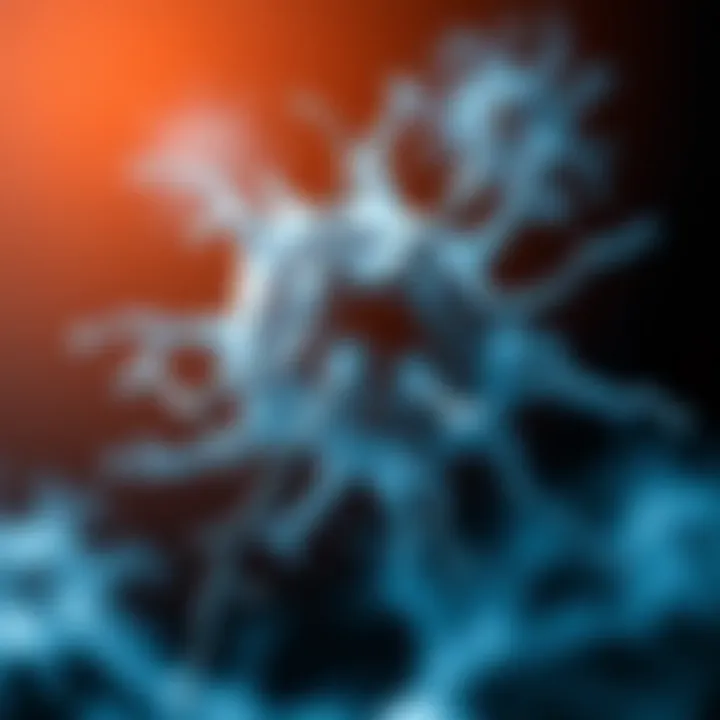
Role in Cognitive Functions
When discussing cognitive functions, one can't overlook the contributions of neuron morton. These neurons are essential in processes like memory, attention, and problem solving.
- Memory Formation: The neuron morton supports synaptic plasticity, which is the brain's ability to adapt through experience. When we learn something new, neuron morton facilitates the connections formed between synapses, making recall easier. Studies suggest that a healthy neuron morton is linked to better memory retention and learning capabilities.
- Attention Regulation: This neuron is also involved in controlling our attentional processes. It helps filter out irrelevant stimuli, allowing focus and concentration on tasks. Disruptions in its function can result in attention deficits and problems with multitasking.
- Problem Solving: Cognitive flexibility is another area where neuron morton shines. It assists in adapting thought processes and finding solutions to new challenges, playing a key role in creative thinking and adaptation.
"The intricacies of the neuron morton grant us insight into the subtle underpinnings of our thought processes, reflecting a fundamental architecture of human cognition."
In short, the health of neuron morton is intrinsically linked to our cognitive prowess. A well-functioning neuron morton can enhance our abilities to learn, focus, and creatively solve issues.
Contribution to Emotional Regulation
Another area where the neuron morton shows its importance is in emotional regulation. Our emotions govern much of our daily lives, impacting everything from decision-making to interpersonal relations, and neuron morton plays a central role in this.
- Emotional Responses: The neuran morton regulates the release of neurotransmitters like serotonin and dopamine, which are critical for mood stabilization. Proper functioning can reduce the risks of anxiety and depressive disorders.
- Stress Management: How we react to stress is significantly influenced by the health of neuron morton. A well-functioning neuron morton can help modulate stress responses, ensuring that emotional reactions remain within a healthy range. Conversely, disruption in its activity could lead to exaggerated responses, contributing to stress-related conditions.
- Social Interactions: This neuron also enhances our ability to interpret social cues and emotional expressions. Being attuned to our own and others' emotions can foster better relationships, essential for personal well-being and social cohesion.
Neuron Morton and Neurological Disorders
The examination of neuron morton in relation to neurological disorders serves a crucial role in understanding how these cells influence various brain functions and overall mental health. Neurological disorders impact millions globally, manifesting in anything from memory loss to severe emotional disturbances. Recognizing the link between neuron morton and these conditions is essential for developing effective interventions and treatment plans. Delving into this topic reveals not just the biology of neurons, but also the potential therapeutic avenues that might arise from a deeper understanding of their functions.
Links to Neurodegenerative Diseases
Neurodegenerative diseases, such as Alzheimer’s and Parkinson’s, illustrate the profound implications of neuron morton within the realm of pathological science. Research suggests that neuron morton can contribute significantly to these conditions through various pathological processes.
One important aspect is the role of neuron morton in synaptic degeneration. Over time, the natural decline in neuron morton functionality may lead to impaired neurotransmitter release, disrupting communication pathways between neurons. This breakdown causes cognitive decline among patients, as observed in Alzheimer’s disease, where amyloid plaque buildup interferes with neuron morton's activities.
Moreover, neuron morton is visible in connection with oxidative stress. Studies have shown that oxidative stress can damage neuron morton, leading to a cascade of synaptic failures. This can result in the gradual degeneration observed in conditions like Amyotrophic Lateral Sclerosis (ALS).
Consequently, researchers are now investigating potential treatments that focus on strengthening neuron morton health. Such therapies may counteract the degradation associated with neurodegenerative diseases, possibly leading to better management strategies for patients.
Role in Psychiatric Conditions
The relationship between neuron morton and psychiatric conditions illuminates how structural and functional deficits in neurons can manifest as mental health issues. Disorders such as depression, anxiety, and schizophrenia can find their roots in the imbalances originating from neuron morton behaviors.
A significant factor here is the dysregulation of neurotransmitters, as neuron morton is pivotal in their release and uptake. For instance, in the case of depression, serotonin levels can be affected when neuron morton pathways are compromised. This finding has directed researchers toward exploring serotonin reuptake inhibitors, which assist in modulating the neurotransmitter levels that neuron morton regulates.
Furthermore, the adage "a brain in imbalance is a mind in chaos" resonates well as studies demonstrate how disturbances in neuron morton lead to altered states of cognition and emotion. The implications of this relationship extend beyond symptoms, calling into question the very interventions used in managing these disorders.
Current Research on Neuron Morton
Research in the field of neuroscience is ever-evolving, and the focus on neuron morton exemplifies this dynamism. Understanding neuron morton is not just a matter of identifying its components and functions; it requires delving into recent research breakthroughs that highlight its importance in both neural communication and broader neurological health. This section of the article aims to unpack recent developments, innovative therapeutic techniques, and the serious implications that these studies hold for understanding the full scope of neuron morton.
Recent Advances in Neurobiology
The past few years have ushered in significant strides in neurobiology, shedding light on the neuron morton with a fresh perspective. Recent research has concentrated on how neuron morton interacts with various types of cells within the nervous system. For instance, a study published in 2022 reported detailed analyses of neuron morton's role in synaptic plasticity - that is, how connections between neurons strengthen over time or weaken in response to different stimuli.
These findings open new doors for comprehending learning processes and memory formation. It appears that neuron morton not only serves as a bridge for electrical impulses but also adapts its structure in response to environmental changes. This malleability underscores the potential for therapeutic strategies that harness neuron morton's adaptability to treat cognitive deficits associated with aging or disease.
Moreover, another cutting-edge study investigated the molecular pathways activated during neuron morton's response to injury. Researchers discovered that neuron morton engages specific growth factors, facilitating recovery and repair mechanisms that are critical after neural damage. The implications of these discoveries cannot be overstated, particularly in the context of neurodegenerative diseases where neuronal damage is prevalent.
Innovations in Therapeutic Approaches
The current landscape of therapeutic approaches targeting neuron morton is as exciting as it is multifaceted. Neurorehabilitation techniques have begun to incorporate findings related to neuron morton's dynamics, especially in enhancing recovery from brain injuries. Therapies that promote plasticity and resilience in neurons are gaining traction. These techniques include various physical therapies designed to stimulate the growth and re-organization of neuron morton pathways, helping patients regain lost functionalities.
Another experimental approach involves gene therapy. Scientists are exploring how modifying specific genes within the neuron morton framework could yield protective benefits against neurological disorders. Researchers have reported promising results from modifying these genes in mouse models, aiming to recreate protective environments that bolster neuron functions.
"Understanding neuron morton is imperative. Its adaptability not only mediates repair but also shapes our cognitive capabilities, impacting everything from learning to emotional resilience."
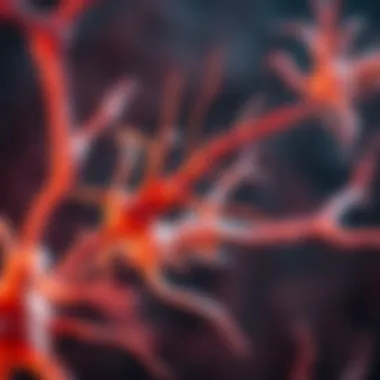
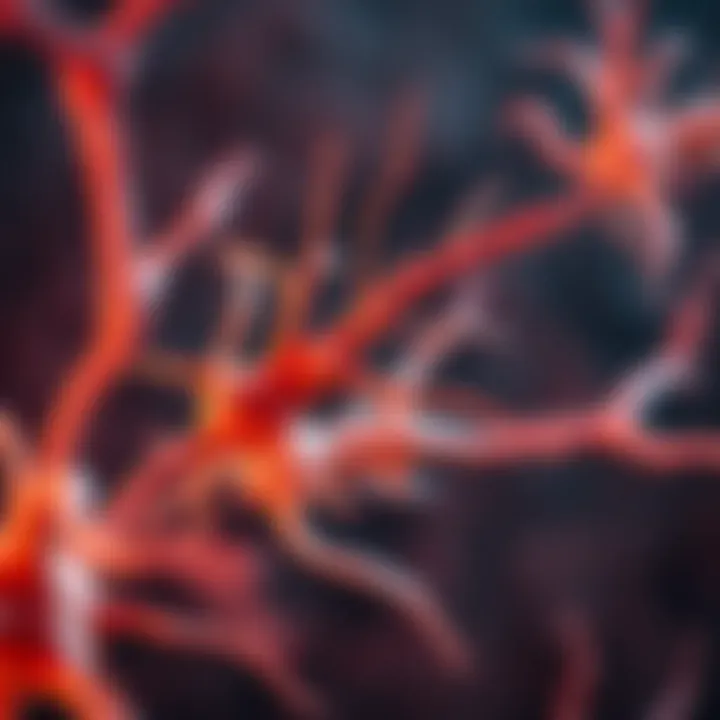
Another area of innovation is the use of pharmacological agents aimed at enhancing the signaling pathways associated with neuron morton. These agents could potentially lead to breakthroughs in treating conditions like depression and anxiety, which have been linked to the functionality of neuron morton.
In summary, the current research surrounding neuron morton unveils a promising interplay of advances in the neurobiological landscape and innovations in therapeutic strategies. As we venture further into this field, it becomes increasingly evident that neuron morton is not merely a cog in the machine but a highly adaptable entity instrumental in our understanding of neural health and recovery.
Educational Implications
In today’s fast-paced world of science and technology, understanding the neuron morton is critical for students and professionals alike. The importance of neuron morton in education cannot be overstated, as it provides a solid foundation for both neuroscience and psychology. Engaging with the intricacies of neuron morton allows learners to appreciate the complexities of neural communication and its far-reaching implications. With this knowledge, students not only obtain a strong grasp of basic concepts but are also equipped to tackle advanced topics surrounding neurologic functionality.
Importance in Neuroscience Education
When it comes to the realm of neuroscience, neuron morton serves as a cornerstone. It represents a significant leap in comprehending how neuronal activity facilitates cognitive processes. The neuron morton exemplifies the relationship between structure and function within the nervous system, making it essential learning material.
- Facilitation of Neural Communication: Understanding the specific roles of neuron morton illustrates how neurons transmit signals, revealing the pathways of thought and action.
- Bridging Theory and Practice: By studying neuron morton, students can relate theoretical principles to real-life applications, enhancing their critical thinking skills.
- Foundation for Future Inquiry: Knowledge of neuron morton opens doors for research opportunities, as students explore further connections with neurological disorders and treatment methodologies.
Interdisciplinary Studies and Collaboration
Exploring neuron morton also highlights the growing need for interdisciplinary collaboration. The intertwining of neuroscience with psychology, biology, and even computational sciences fosters a richer educational environment.
- Collaborative Learning: Engaging with diverse perspectives leads to new insights that can advance understanding of neuron morton’s complexities. For instance, merging psychological theories with neurological studies can provide a more nuanced view of behavioral patterns.
- Diverse Methodologies: Different disciplines often employ varying approaches to study neuron morton. Using a combination of laboratory experiments, simulations, and theoretical modeling can yield valuable findings that might not emerge through a singular disciplinary lens.
- Real-World Applications: Interdisciplinary studies can lead to breakthroughs in technologies for treatment. For example, integrating computer science with neuroscience could spawn advanced neuroimaging techniques, providing better diagnostic tools for various conditions.
Educational implications of neuron morton are vast. Its role not only enhances individual understanding of neural mechanisms but also enriches collaborative efforts across fields, fostering a culture of shared knowledge and discovery that could propel scientific advancements.
"Neuroscience is not a siloed discipline, but a tapestry woven from many threads of inquiry."
As the field of neuroscience continues to expand, an integrated educational approach focused on neuron morton will prepare the next generation of researchers and professionals to navigate its complexities. For informative resources, visit Wikipedia, or check educational materials on Britannica and forums like Reddit.
Future Directions in Neuron Morton Research
Looking ahead, the exploration of neuron morton presents vast possibilities, steering scholars and practitioners alike into uncharted territory. This section details critical components of future research pathways, underlining the significance of pursuing such inquiries in the realm of neuroscience and psychology. The potential to reshape existing theories and enhance therapeutic interventions is immense. Not only does the study of neuron morton inform us about underlying mechanisms of neural behavior, but it also opens doors to innovative methods in understanding and treating neurological disorders.
Emerging Theoretical Frameworks
As we stand on the precipice of neuroscience's next frontier, emerging theoretical frameworks are gaining traction. These frameworks often originate from interdisciplinary collaborations, harnessing insights from psychological studies, cognitive science, and evolutionary biology. They encourage us to ponder how neuron morton functions not merely as an isolated unit but as part of a larger neural ecosystem.
For instance, consider the concept of modular connectivity. This theory posits that clusters of neuron morton engage in complex interrelations, adapting in response to various stimuli. Such innovative perspective can help explain behavioral variances seen in different individuals, offering a more nuanced understanding of brain function. Moreover, the role of gene expression in neuron morton functionality could be examined through longitudinal studies, potentially leading to breakthroughs in how we perceive genetic predispositions in neurological health.
"Understanding the nuances of neuron morton can illuminate paths toward therapies never before imagined."
Potential for Clinical Applications
The clinical applications of expanded research into neuron morton are numerous and vital. First and foremost, enhanced understanding of its functionalities can provide crucial insights into neurological disorders like Alzheimer’s, Parkinson’s, and depression. By identifying the precise roles neuron morton play in these conditions, researchers can develop targeted interventions that might neutralize their effects or even reverse some aspects of neural degeneration.
Furthermore, there’s the emerging field of personalized medicine that could benefit tremendously. Imagine therapies tailored to an individual’s unique neural profile involving neuron morton. This would signify not only a revolutionary step in treatment but also a move toward anticipating and mitigating potential issues before they arise.
With the adoption of advanced imaging techniques and larger-scale data analyses, the potential for real-time observation of neuron morton activities expands. This technological leap can yield timely insights into neuronal health and functionality, allowing early intervention strategies that could drastically improve quality of life.
End
In wrapping up our exploration of the neuron morton, it's crucial to grasp the far-reaching implications of this research. Understanding the neuron morton is not just an academic exercise; it plays a significant role in how we comprehend brain functionality, development, and disorders. The multilayered insights into neuron morton enhance our grasp of both basic and complex neural processes, providing a foundation for future studies.
Summary of Key Insights
Throughout this article, we have journeyed through various facets that characterize neuron morton. Here are some key insights:
- Anatomical Features: The intricate structure of neuron morton is essential for its functions, where synaptic connectivity enables effective communication across neural circuits.
- Physiological Impact: Its role in cognitive functions, such as memory and learning, showcases the interconnectivity of neurons and how they contribute to behavior.
- Health and Disorders: The neuron morton serves as a critical link in understanding neurodegenerative diseases and psychiatric conditions, highlighting the neuronal basis of these ailments.
- Research Directions: Emerging theories and innovative therapeutic approaches showcase the neuron morton’s relevance in both academic research and practical applications.
These insights not only underscore the complexity of neuron morton but also affirm its place in the landscape of neuroscience, suggesting areas ripe for further investigation.
Final Thoughts on Neuron Morton
The neuron morton represents a vibrant frontier in neuroscience that holds promise for enhancing our understanding of the brain. As emerging research continues to accentuate its significance, it is imperative that both practitioners and scholars consider the comprehensive dynamics of neuron morton. Recognizing its contributions helps cultivate interdisciplinary collaborations, facilitating scientific inquiry that transcends traditional boundaries. Whether one is looking at its implications for education, research, or clinical practices, the neuron morton remains a pivotal subject. Thus, engaging with this topic opens the door to a myriad of possibilities, illuminating paths for future discoveries and interventions.
"Understanding neuron morton is not just about studying its components; it’s about grasping the orchestration of life itself."
As neuroscience evolves, staying abreast of developments concerning neuron morton will be critical for anyone invested in the scientific study of the brain and its myriad complexities.







